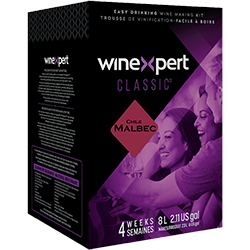The Science and Art of Crafting Lower Alcohol Wines
Posted by Matteo Lahm on 24th Jul 2023
As a winemaker, you are the alchemist of the vineyard, transforming humble grapes into liquid gold. Your magic wand? The alcohol content. Your canvas? The intricate balance of flavors and aromas that make up a bottle of wine. Today, we're going to explore the science behind crafting lower alcohol wines, their aging process, and their fruit-forward characteristics.
Let's start with the basics. The aging process of wine is a fascinating dance of chemical reactions, with alcohol playing a leading role. It acts as a solvent during fermentation, extracting color, flavor, and tannins from the grape skins. The higher the alcohol content, the more extraction occurs, resulting in a more robust and complex wine.
Before addressing low alcohol wines, let’s discuss high alcohol wines so you have a point of reference. High alcohol wines are a rich tapestry of flavors and aromas, each thread representing a different element - tannins, acids, and alcohol. When the wine is young, these threads are distinct, each vying for attention. The tannins might be too harsh, the acidity too sharp, the fruit flavors too obscured. It's like reading the first few chapters of a novel where characters and plot lines are introduced, but their relationships and significance are not yet clear.
As the wine ages, these individual threads start to intertwine, to harmonize. The harsh tannins soften, the sharp acidity mellows, and the flavors evolve and deepen. This is akin to the plot of a novel unfolding, where characters develop, relationships form, and themes emerge. The wine, like the novel, becomes a coherent, integrated whole.
This transformation doesn't happen overnight. It's a slow, gradual process that takes place over years, even decades. The alcohol in the wine acts as a preservative, allowing the wine to age without spoiling. But it also acts as a catalyst for the chemical reactions that lead to this integration of flavors and aromas.
The higher the alcohol content, the more potential there is for complexity, but also the more time it takes for this complexity to develop. It's a delicate balancing act, a dance between time and chemistry that the winemaker must master.
So, when crafting high alcohol wines, patience truly is a virtue. Give your wines the time they need to develop, to mature, to become the best versions of themselves. The result will be a wine that's as rich, complex, and satisfying as a well-written novel.
Now, let's shift our focus to lower alcohol wines. These wines, with their delicate balance and subtlety, are like a short story. The lower alcohol content means less extraction during fermentation, resulting in a wine that's less tannic and less complex.
But here's the interesting part. Lower alcohol wines tend to be more fresh fruit-forward. This is because the lower alcohol content causes less breakdown of the fruit matter during fermentation. The fruit flavors remain more intact, resulting in a wine that showcases the pure, unadulterated essence of the grape.
Because these wines are less tannic, they don't need as much time to soften and mellow. They're ready to reveal their fruity charm much sooner than their high-alcohol counterparts.
The science behind this is straightforward. Tannins, those compounds that give wine its structure and can cause a drying sensation in your mouth, react with oxygen over time. This reaction, known as oxidation, softens the tannins, making the wine smoother and more pleasant to drink.
High alcohol wines have more tannins, so they need more time to oxidize and soften. Lower alcohol wines, on the other hand, have fewer tannins, so they oxidize and soften more quickly.
So, as a winemaker, when crafting lower alcohol wines, remember that less can indeed be more. Less alcohol means less aging, but it also means a wine that's ready to be enjoyed sooner, with a fruitier profile that's sure to delight the palate.
Another delightful advantage of lower alcohol wines is their drinkability. These wines, with their lighter alcohol content, allow you to indulge in your love for wine more freely without the heavy effects of intoxication. It's akin to enjoying a novella instead of a dense tome - you can savor the experience without feeling overwhelmed.
Lower alcohol wines are like the gentle ebb and flow of a calm sea, allowing you to dip your toes in without fear of being swept away. They offer a more relaxed, leisurely wine-drinking experience, perfect for those long lunches, afternoon picnics, or casual dinners where you want the wine to complement the conversation, not dominate it.
This doesn't mean that lower alcohol wines are any less enjoyable or satisfying. On the contrary, their subtlety and balance can offer a refreshing change of pace, a different perspective on the art of winemaking. They're a testament to the fact that wine enjoyment is not about the strength of the alcohol, but the harmony of the flavors and the joy of the experience.
If you make wines from kits, you can try a Finer Wine Kits Novello or a Winexpert Classic. These kits do not require aging, so if you want to make a wine you can drink right away, give them a whirl. In no time, you’ll pour yourself a glass of lower alcohol wine, sit back, and savor the moment. Cheers!



